Best Tools for Laravel Developers to Buy in December 2025
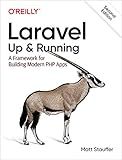
Laravel: Up & Running: A Framework for Building Modern PHP Apps


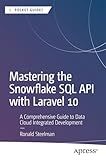
Mastering the Snowflake SQL API with Laravel 10: A Comprehensive Guide to Data Cloud Integrated Development (Apress Pocket Guides)


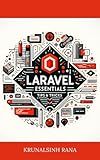
Laravel Essentials: Tips & Tricks for Developers: Master Laravel with Practical Tips for Every Developer


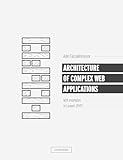
Architecture of complex web applications. Second Edition.: With examples in Laravel(PHP)


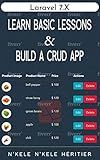
Laravel 7.X : LEARN BASIC LESSONS & BUILD A CRUD APP (PHP Framework)


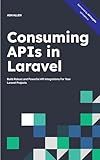
Consuming APIs in Laravel: Build Robust and Powerful API Integrations For Your Laravel Projects With Ease


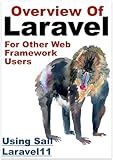
Overview Of Laravel PHP Framework: For Other Web Framework Users


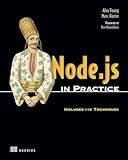
Node.js in Practice


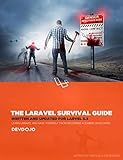
The Laravel Survival Guide: Written & Updated for Laravel 5.3


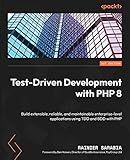
Test-Driven Development with PHP 8: Build extensible, reliable, and maintainable enterprise-level applications using TDD and BDD with PHP


To extend the Builder class in Laravel, you need to create a new class that inherits from the Builder class and add your custom methods or override existing ones. This allows you to extend the functionality of the Builder class and use your custom methods when building queries.
Here are the steps to extend the Builder class:
- Create a new class that extends the Illuminate\Database\Eloquent\Builder class. You can place this class anywhere in your Laravel project, such as the app directory.
namespace App;
use Illuminate\Database\Eloquent\Builder;
class CustomBuilder extends Builder { // Add your custom methods or override existing ones here }
- In your model, override the newEloquentBuilder method to return an instance of your CustomBuilder class instead of the default Builder class.
namespace App;
use Illuminate\Database\Eloquent\Model;
class YourModel extends Model { /** * Get a new query builder instance for the connection. * * @param \Illuminate\Database\Query\Builder $query * @return \Illuminate\Database\Eloquent\Builder|static */ public function newEloquentBuilder($query) { return new CustomBuilder($query); } }
- Now you can add your custom methods or override existing methods in the CustomBuilder class. For example, you can create a method to filter records that meet a specific condition:
namespace App;
use Illuminate\Database\Eloquent\Builder;
class CustomBuilder extends Builder { public function whereCustomCondition() { return $this->where('column', 'value'); // Add your custom condition here } }
- Finally, you can use your custom methods in your query chains within your Laravel application.
$records = YourModel::whereCustomCondition()->get();
By extending the Builder class in Laravel, you have the flexibility to add custom functionality to your queries while leveraging the powerful features of Eloquent ORM.
What is the purpose of the Builder class in Laravel?
The Builder class in Laravel serves as a query builder, which provides a convenient and fluent interface for generating and executing database queries. It allows developers to construct complex database queries using a chainable syntax, making it easier to build and modify queries dynamically.
The Builder class is responsible for building and executing SELECT, INSERT, UPDATE, and DELETE queries. It abstracts the underlying database operations and provides methods for adding conditions, joining tables, selecting specific columns, ordering results, limiting results, and more.
Using the Builder class, developers can write database queries in a programmatic way, rather than writing raw SQL queries. This provides advantages such as improved readability, reusability, and security through parameter binding.
Overall, the purpose of the Builder class in Laravel is to simplify and streamline the process of interacting with the database by providing an elegant and expressive query building API.
What is the significance of the union method in the Builder class?
The union method in the Builder class is significant because it allows combining or merging the result of building multiple object parts to create a complex object.
In the context of the Builder design pattern, the Builder class is responsible for constructing an object step by step. The union method is typically used to combine or merge different parts of an object during the construction process.
By using the union method, the Builder class can manage the construction of different parts of an object and then merge them together to form a complete and complex object. This allows for more flexibility and control over the construction process.
The union method is crucial in scenarios where the construction of an object involves assembling various components or parts that need to be combined in a specific way. It enables the Builder class to efficiently handle the combination of these parts, ensuring the final object is constructed properly.
Overall, the union method plays a significant role in the Builder class by facilitating the construction of complex objects through the combination or merging of different parts.
How to use the relationship methods in the Builder class?
To use the relationship methods in the Builder class, you need to follow these steps:
- Create an instance of the Builder class by calling its constructor. Builder builder = new Builder();
- Use the setRelationship() method to specify the relationship type and its value. builder.setRelationship("friend", "John");
- To add more relationships, you can call the setRelationship() method again with different types and values. builder.setRelationship("colleague", "Jane");
- Retrieve the relationships using the getRelationships() method, which returns a map of relationships. Map relationships = builder.getRelationships();
- You can then manipulate the relationships as per your requirements. For example, you can print all the relationships using a loop. for (Map.Entry entry : relationships.entrySet()) { System.out.println(entry.getKey() + " - " + entry.getValue()); }
Note: The Builder class and its relationship methods used in this explanation are fictional and may not directly correspond to a specific programming language or library. Please refer to the specific documentation of the Builder class or library you are using for accurate instructions.
